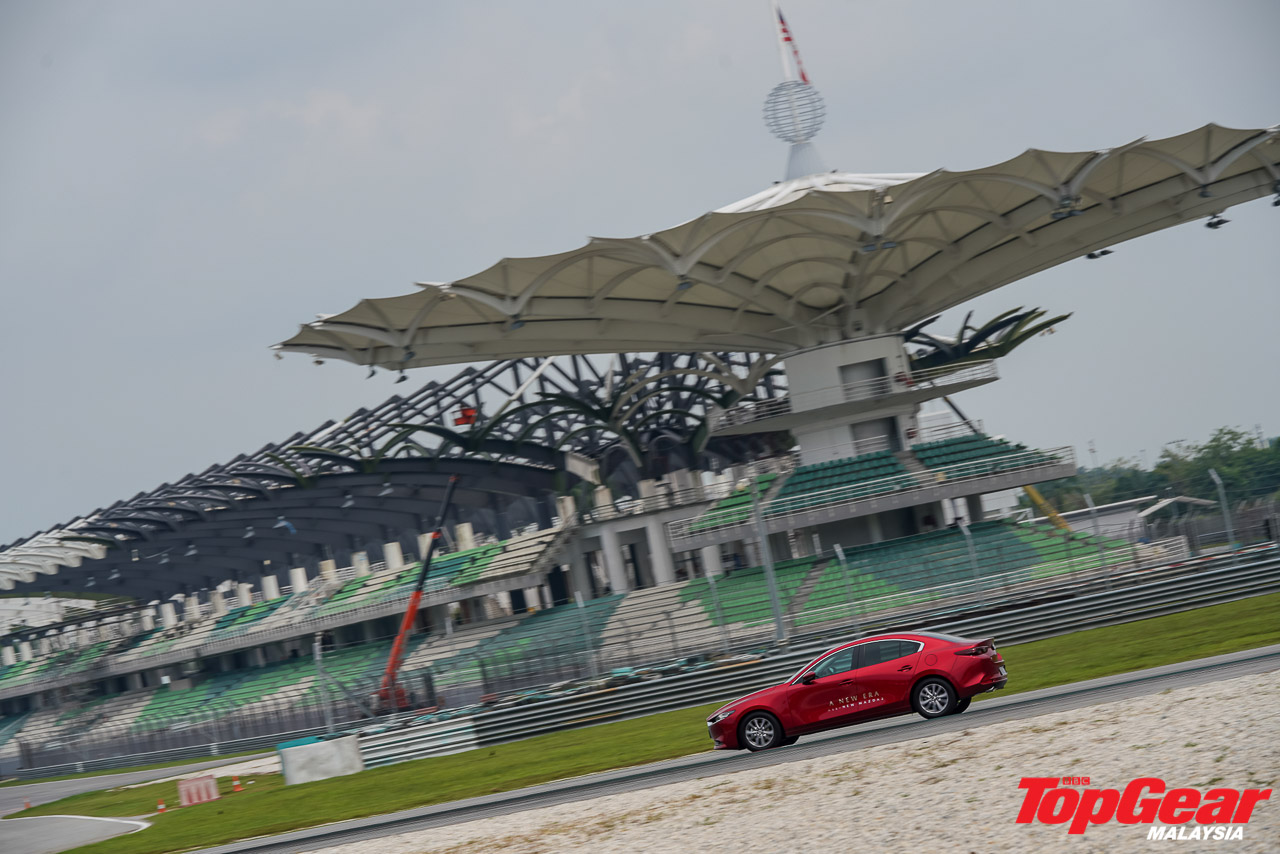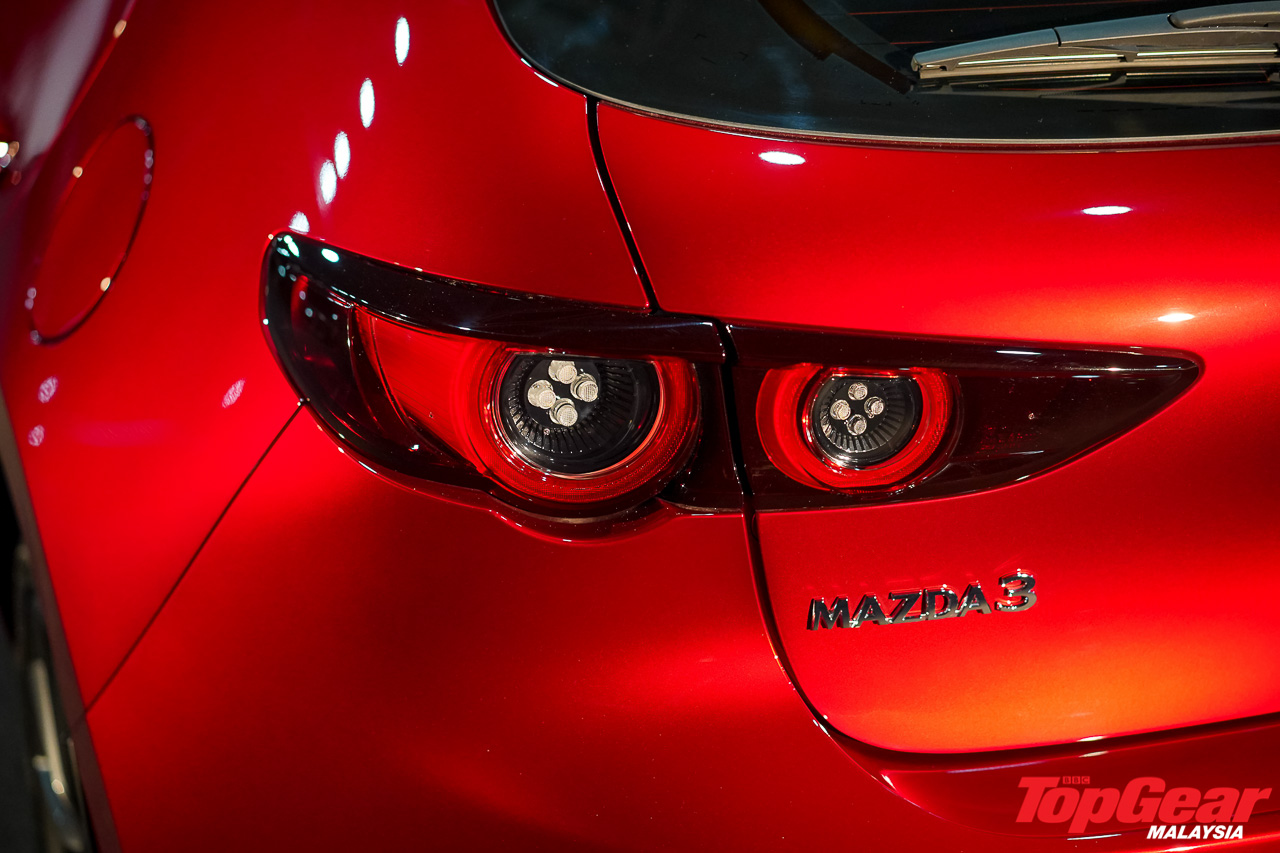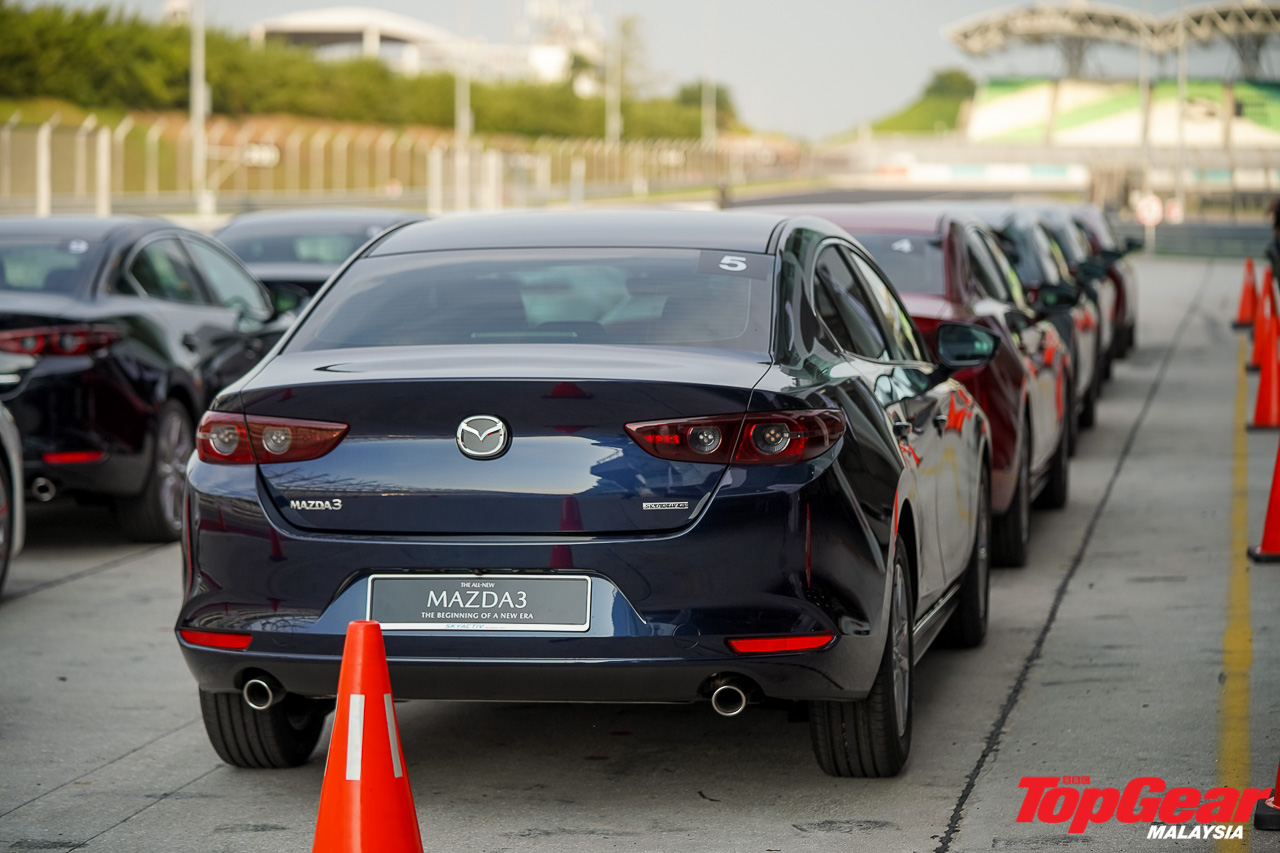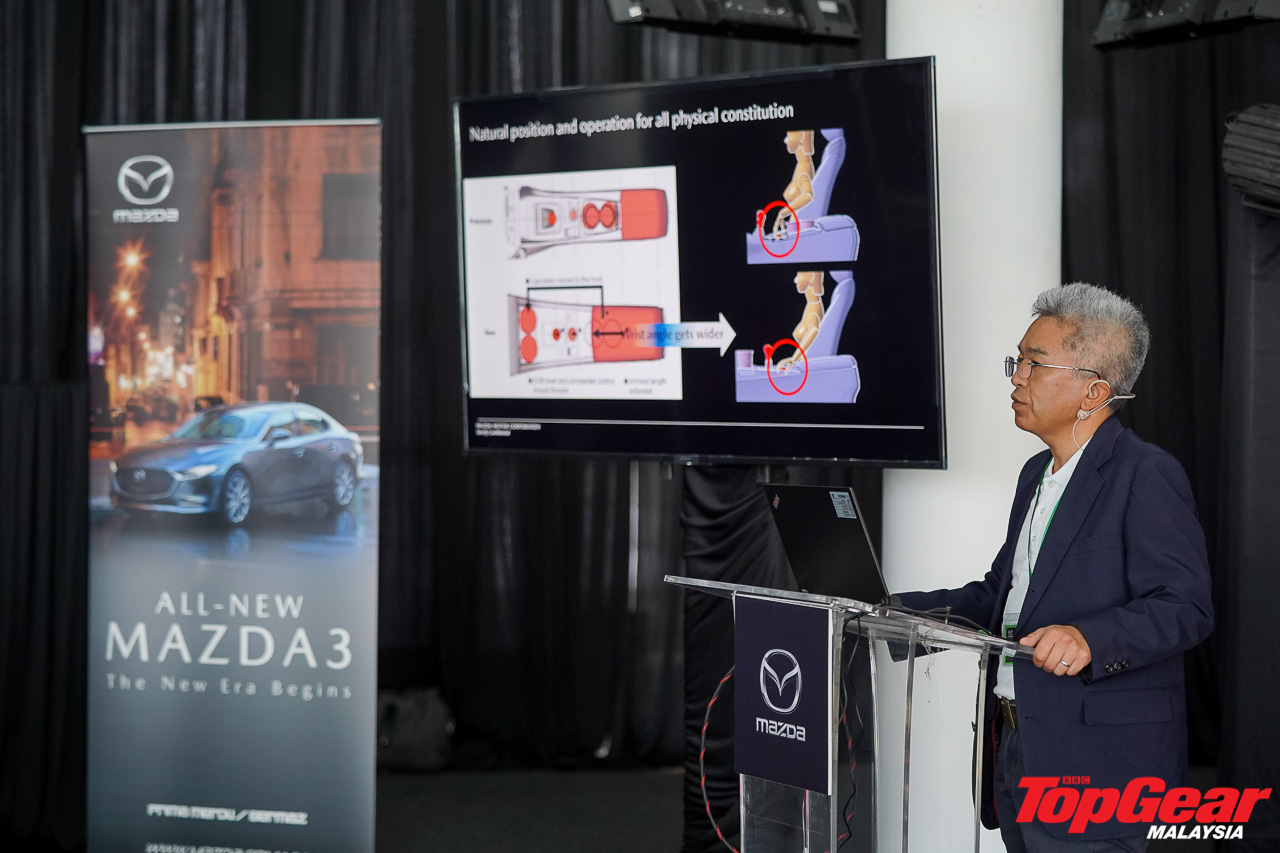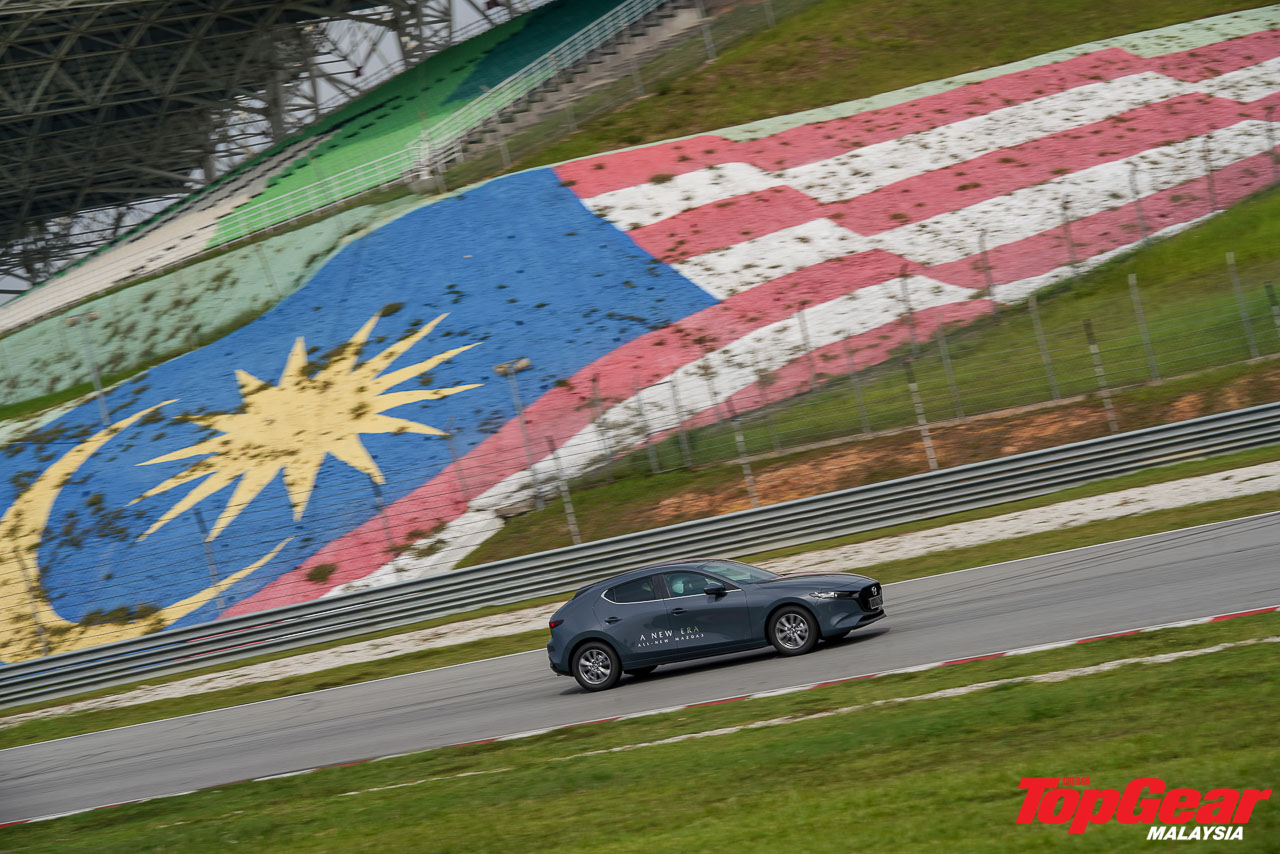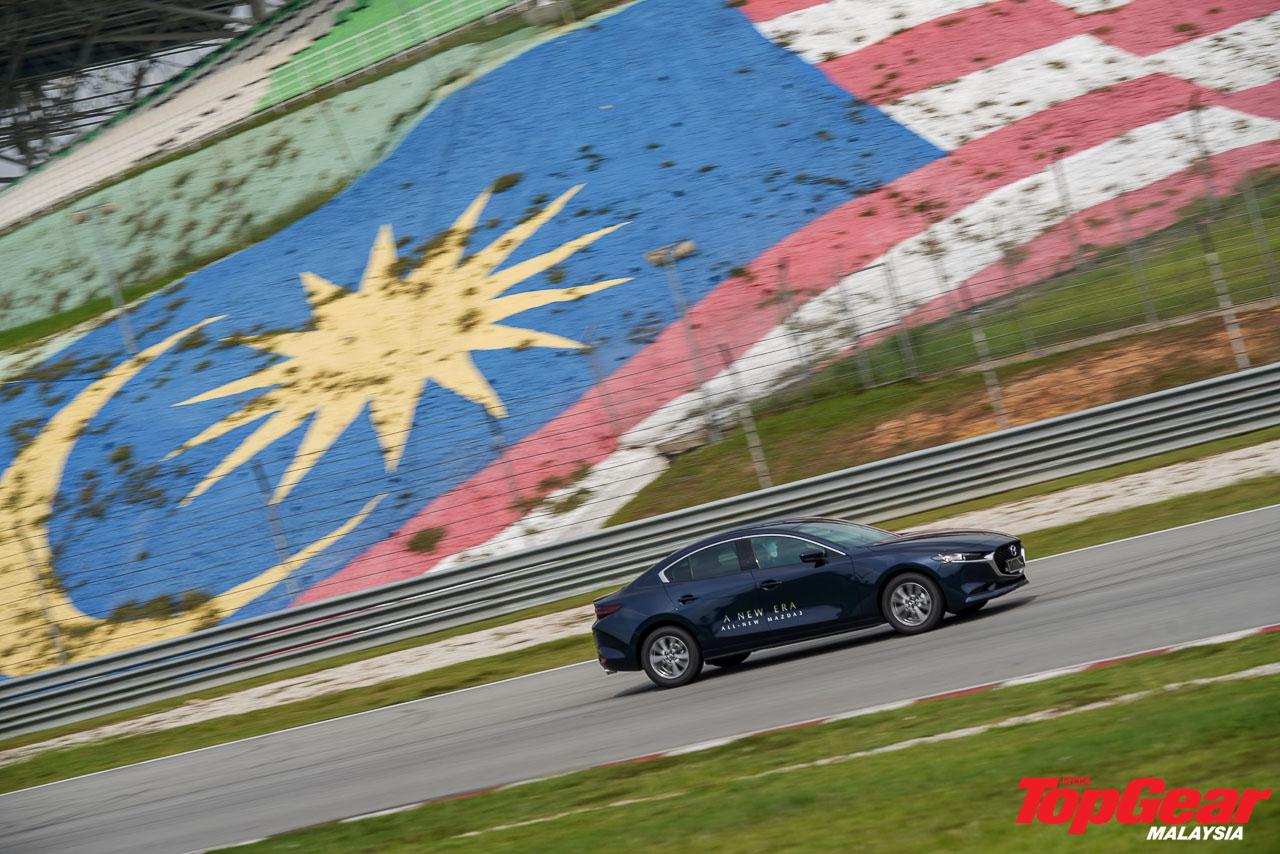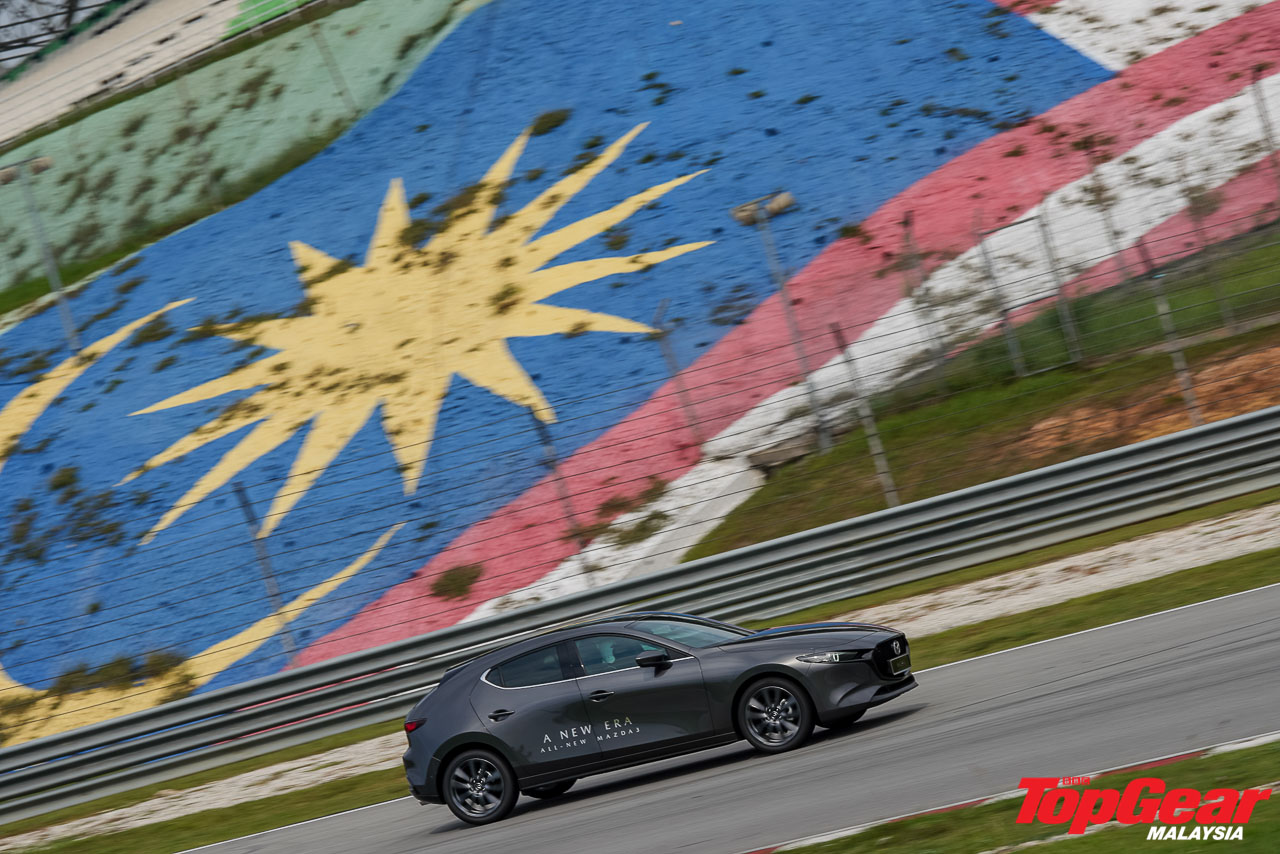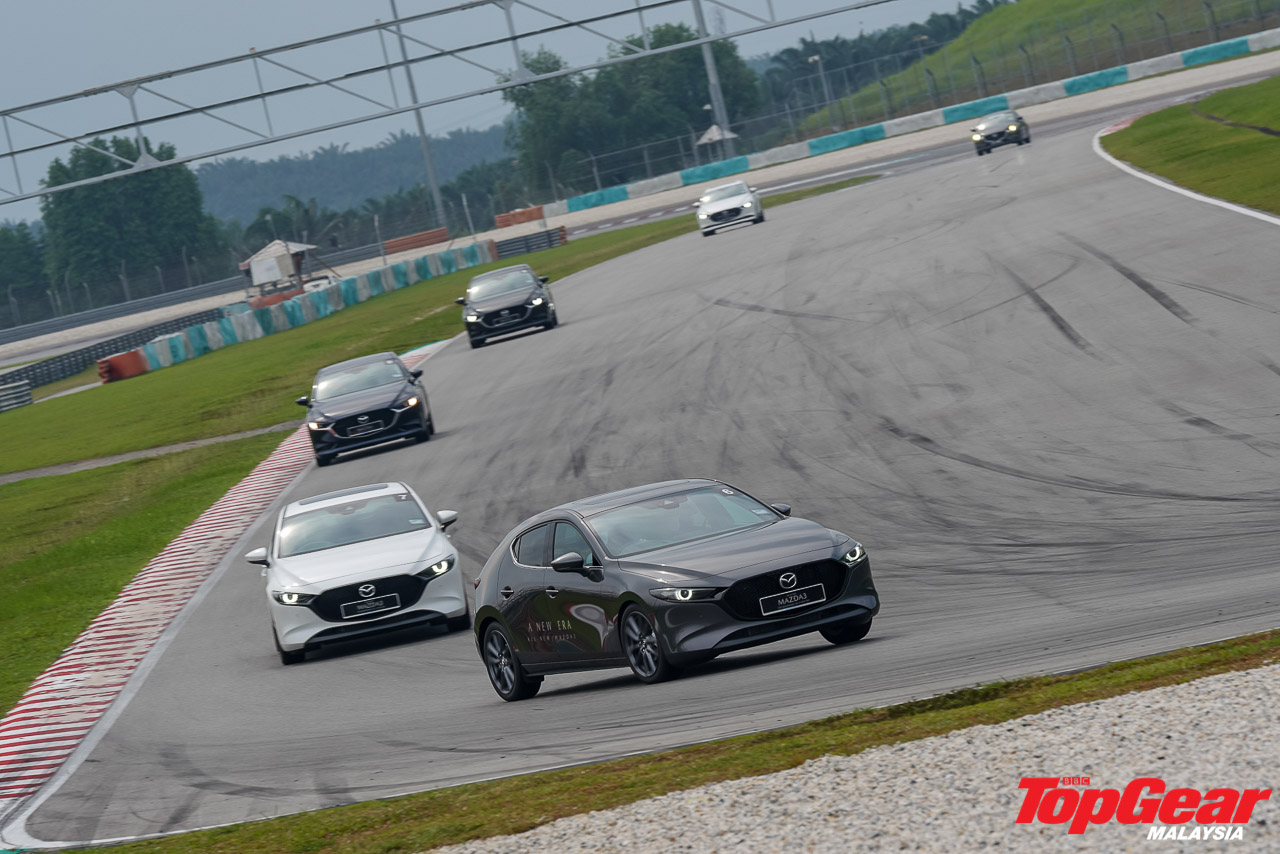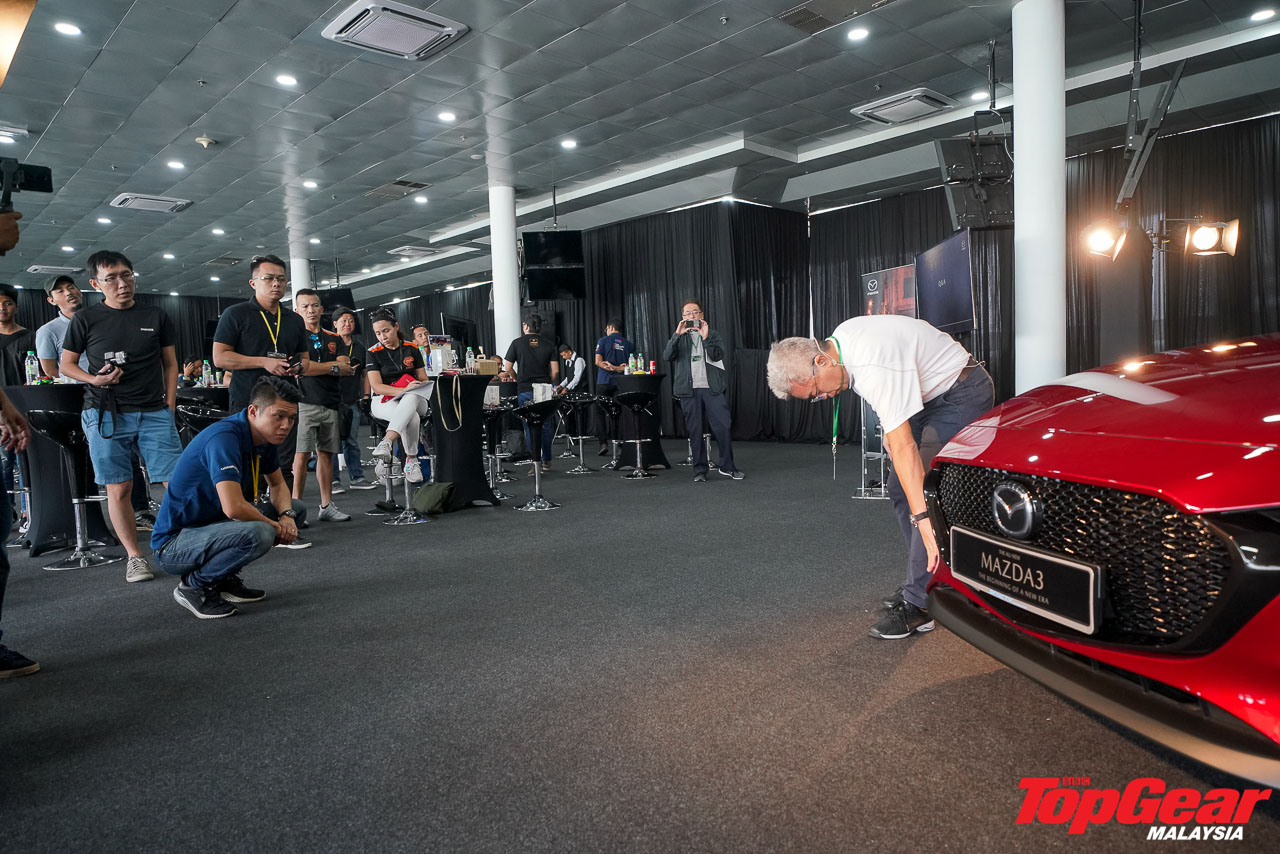
In 2013, BMW Malaysia launched the 316i. At RM209,888 on-the-road, it was the most affordable variant of the F30 3-Series at the time. I remember this well because it was my ‘bright’ idea to pit it against a similarly priced Japanese D-segment sedan in a simple game of what would you buy for the same amount of money. The closest contender turned out to be the Mazda6 SkyActiv-G 2.5 due to its steep CBU pricing (RM184,648 then). The pieces just fit, or so they seemed to until we received a call from a top exec at Mazda Malaysia voicing his dissatisfaction at what he described as an unfair comparison.
Fast forward over half a decade and I’m reeling in disbelief at Bermaz’s insistence on marketing the all-new Mazda3 as an alternative to BMW and Mercedes-Benz to justify its steep, CBU price tag to similarly bewildered fans of the nameplate. Oh, how the tables have turned.








Hearing Bermaz’s executive chairman, Datuk Seri Ben Yeoh, mouth these claims at the Malaysian launch of Mazda’s newest C-segment entrant was one thing. Seeing the actual car, in all its Soul Red Crystal glory, lining up alongside an F30 BMW 330e and W176 Mercedes-Benz A250 in a car park for a handling exercise was a whole new mind boggler altogether. That the parking lot was situated within the grounds of the Sepang International Circuit was also shocking, such are the stratospheric levels of confidence Mazda is placing in its latest pride and joy.
If I don’t tread carefully from here, I might be getting the same phone call for the opposite reason really soon. But to expect any C-segment passenger car to perform on a full-track shakedown on the same circuit that has hosted greatness of the likes of Schumacher, Alonso and Vettel is always going to be a tall order. That the fourth-gen Mazda3 soldiers on with a largely unchanged naturally-aspirated two-litre four banger – and a 1.5 for the entry level spec – is another cause for concern. Surely I wasn’t the only one who had these doubts. Surely I wasn’t the only one who was eventually proven wrong.
The 2.0 High Plus unit – the range-topper which will set you back a cool RM160,059 – I started my Sepang stint in was a lot more responsive than I remembered the two-litre in the third-gen to be. It was so perky off the bat that I felt the urge to go wide right out of the pits heading into turn one, clipping the pit exit line and incurring a stern warning in the process. Thankfully, this wasn’t a real race. And the oversight proved to be a small trade-off for a driving experience that got even better through the bends.
I can confidently attest to the suspension’s aptitude in keeping the car level-headed through corners.

Dynamically, the key talking point has been Mazda’s removal of a multi-link rear suspension setup in favour of a more traditional torsion beam. While it remains to be seen how this affects overall damping on Malaysian roads given the haste of the drive on Formula One grade tarmac, I can confidently attest to the suspension’s aptitude in keeping the car level-headed through corners. It will still understeer if you come in too hot, as will any FWD car under the same circumstances. GVC Plus reduces the chances of this happening. But the ride is set up to offer a comfortable margin for correction on the fly should you overcook it anyway.

Interestingly, the need to retrace my racing line midway through a corner arose more frequently in the 1.5-litre model, such is the enthusiasm of the entry-spec Mazda3. The gulf in power is actually quite significant; the 2.0 has 54hp and 60Nm more than the 1.5. But the latter softens the output deficit with a lighter frame (by about 40kg) and higher compression (14.0:1 vs 13.0:1). These may not add up to much, but the end result certainly feels hyper-energetic, more so than any naturally-aspirated 1.5-litre car in the market anyway.
While the 1.5 can’t deliver as much speed as the 2.0 can, it certainly succeeds in whipping up the sensation of speed. It’s this added tinge of playfulness that keeps your right foot firmly placed on the floor-mounted throttle – yup, that’s premium all right – a little longer, bringing you into the threshold where tyres start screeching the moment heavy steering is applied. The 1.5’s smaller wheels (16 inches vs 18 on the 2.0) might have been responsible for some of the unwanted flex on the turn. But getting the Mazda3 back on track is effortless all the same. If anything, a bit more steering resistance would have sweetened things a little more on a circuit as vast as Sepang.
The key takeaway here is that switching to the 1.5 after a couple of genuinely spirited laps in the 2.0 did not feel like much of a downgrade. Apart from the latter’s paddle shifters that weren’t really necessary– the six-speeder shifts like a peach in a racing suit – leather seats, keyless ignition and sunroof, all of which I pay little attention to while driving, the 1.5’s cockpit is practically the same driver-oriented place to be in. Mazda is extremely passionate about the driver’s ‘oneness’ with the car as part of its Jinba Ittai philosophy. Driving position aside, this fastidiousness extends to simple things like the positioning of AC vents and lack of a touchscreen infotainment to minimise distractions in the hot seat.
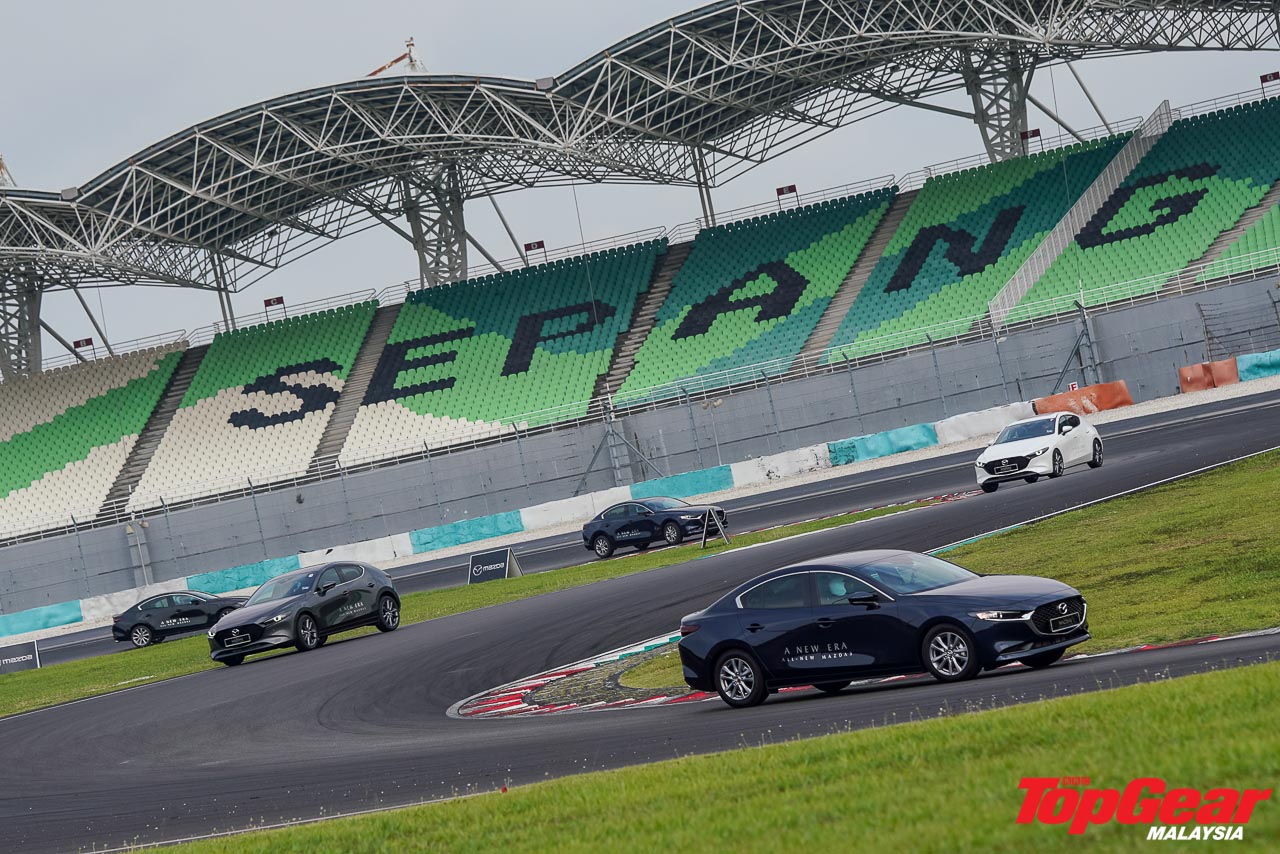


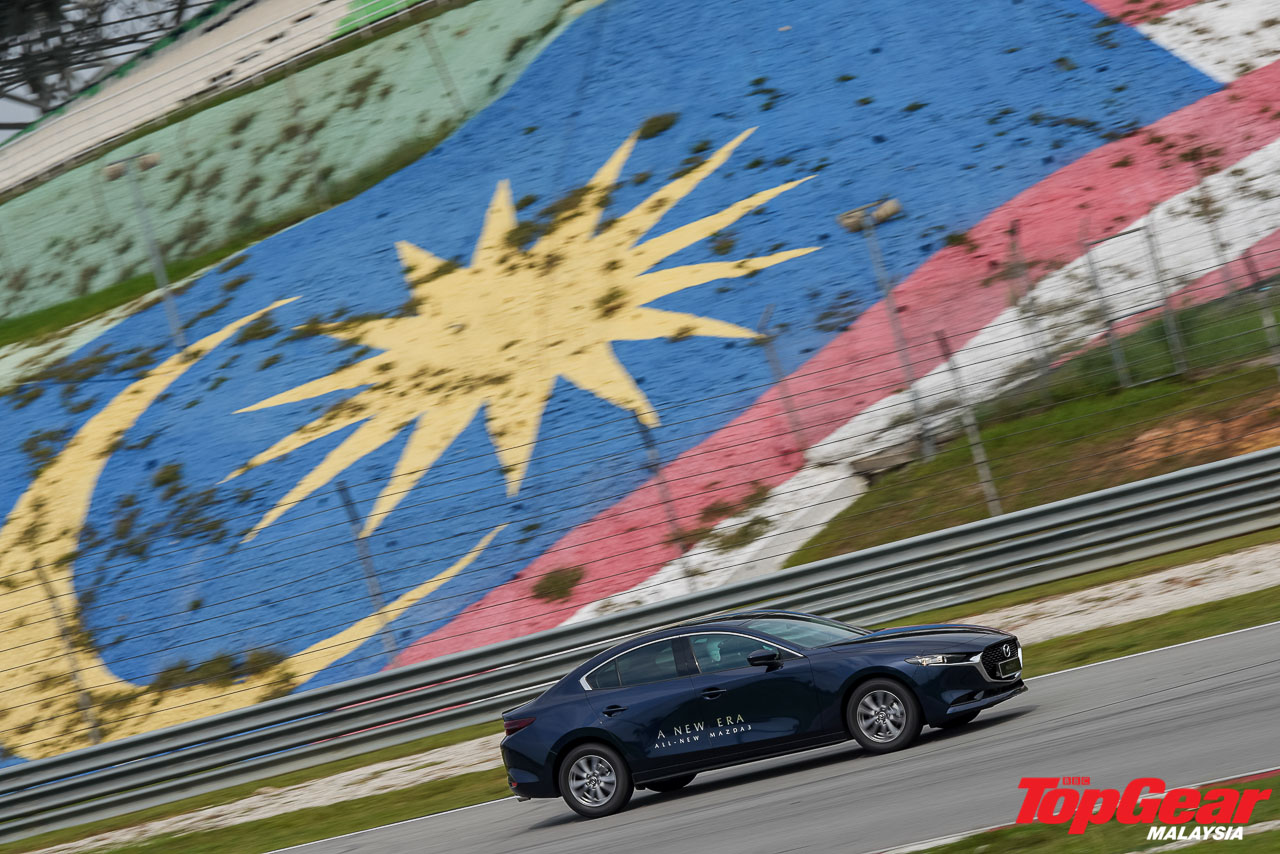


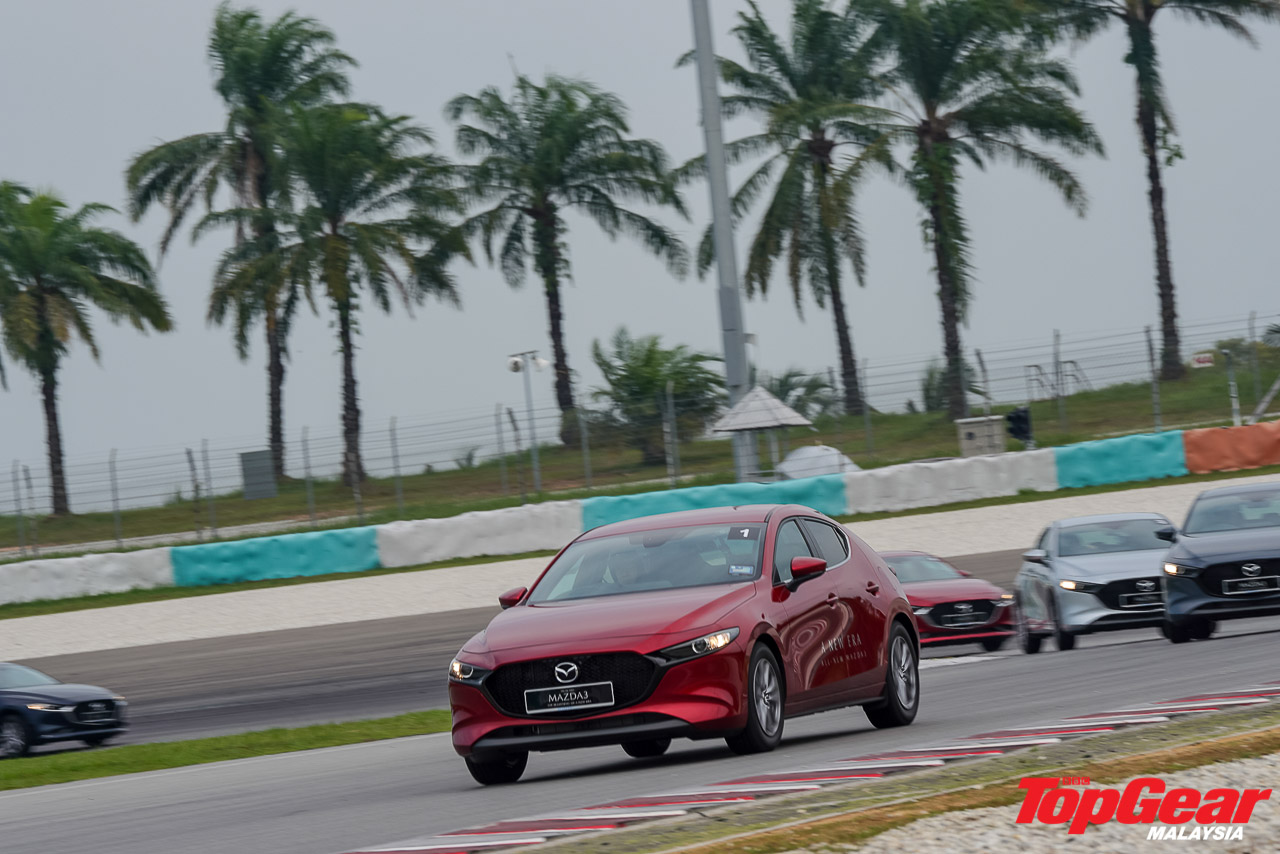
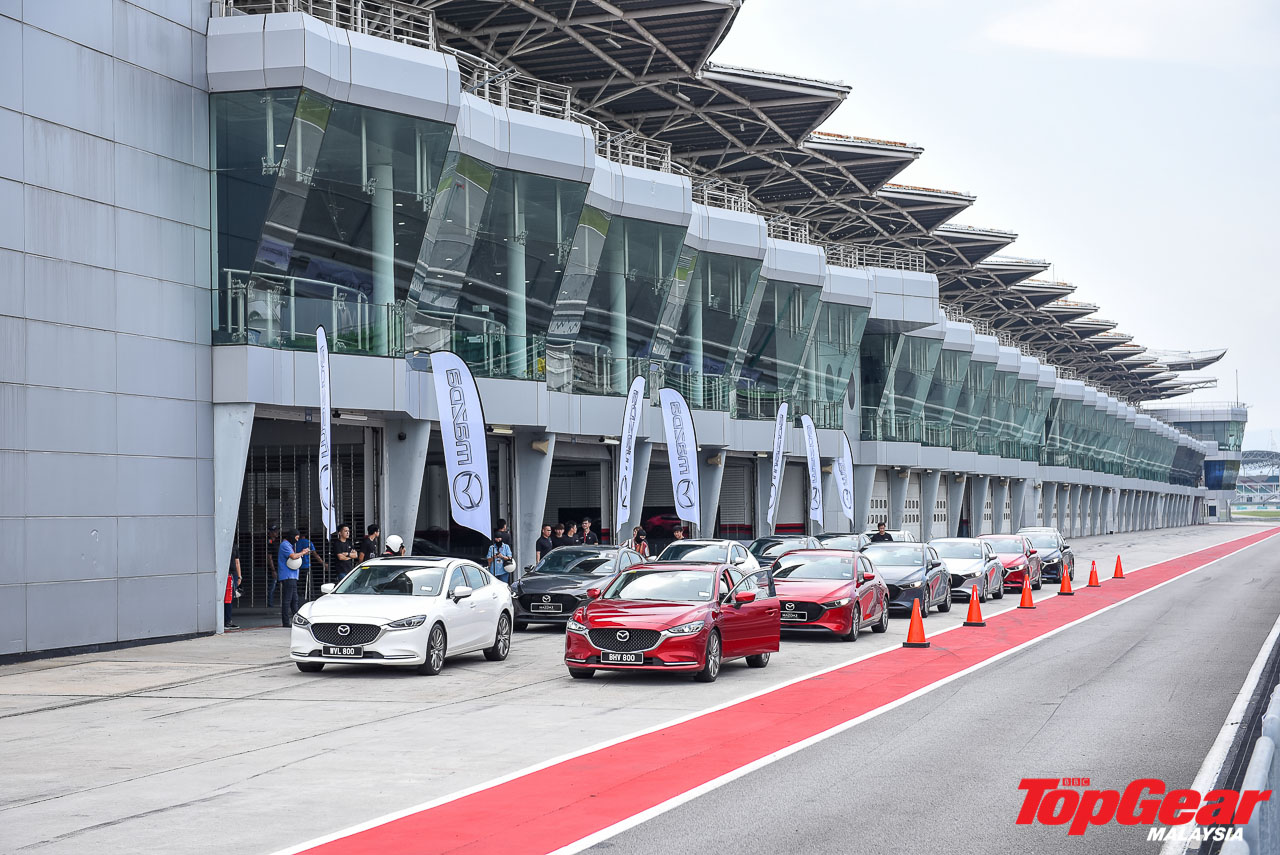


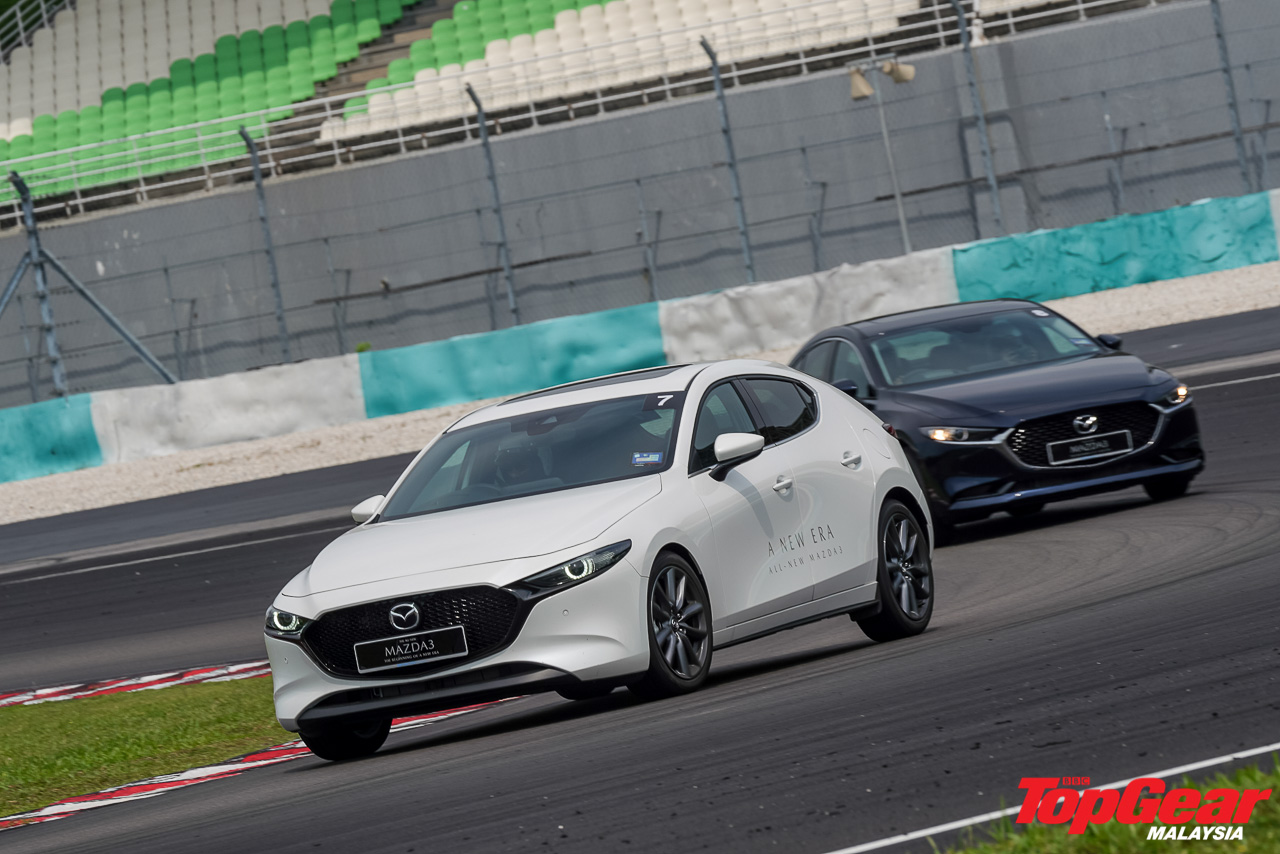
These zen-like methodologies make a lot of sense when you’re doggedly urging the Mazda3 to stay within touching distance of its 6,000rpm power peak, alone and fully-focused on a racetrack. Having a co-driver probably wouldn’t hurt. But those having to sit in the back of the Mazda outside of track days may not be the chirpiest passengers you’ll encounter.

Sure, Mazda’s interior design game is on point, as is the quality of all its touchpoints. But the 3’s rear quarters aren’t nearly as spacious as the current leader of the C-segment, the Honda Civic. And with all AC vents skewed towards the front occupants, passengers in the 1.5, which lacks rear blowers, just have to be thankful for the fabric seats on hot afternoons.
This brings us back to the most pressing question surrounding the new Mazda3 since Day One: does the overall package feel premium enough to justify the car’s hefty CBU price tag?
This is a car determined to excel towards its own set of goals with little care for the competition, built by people who will have it no other way.





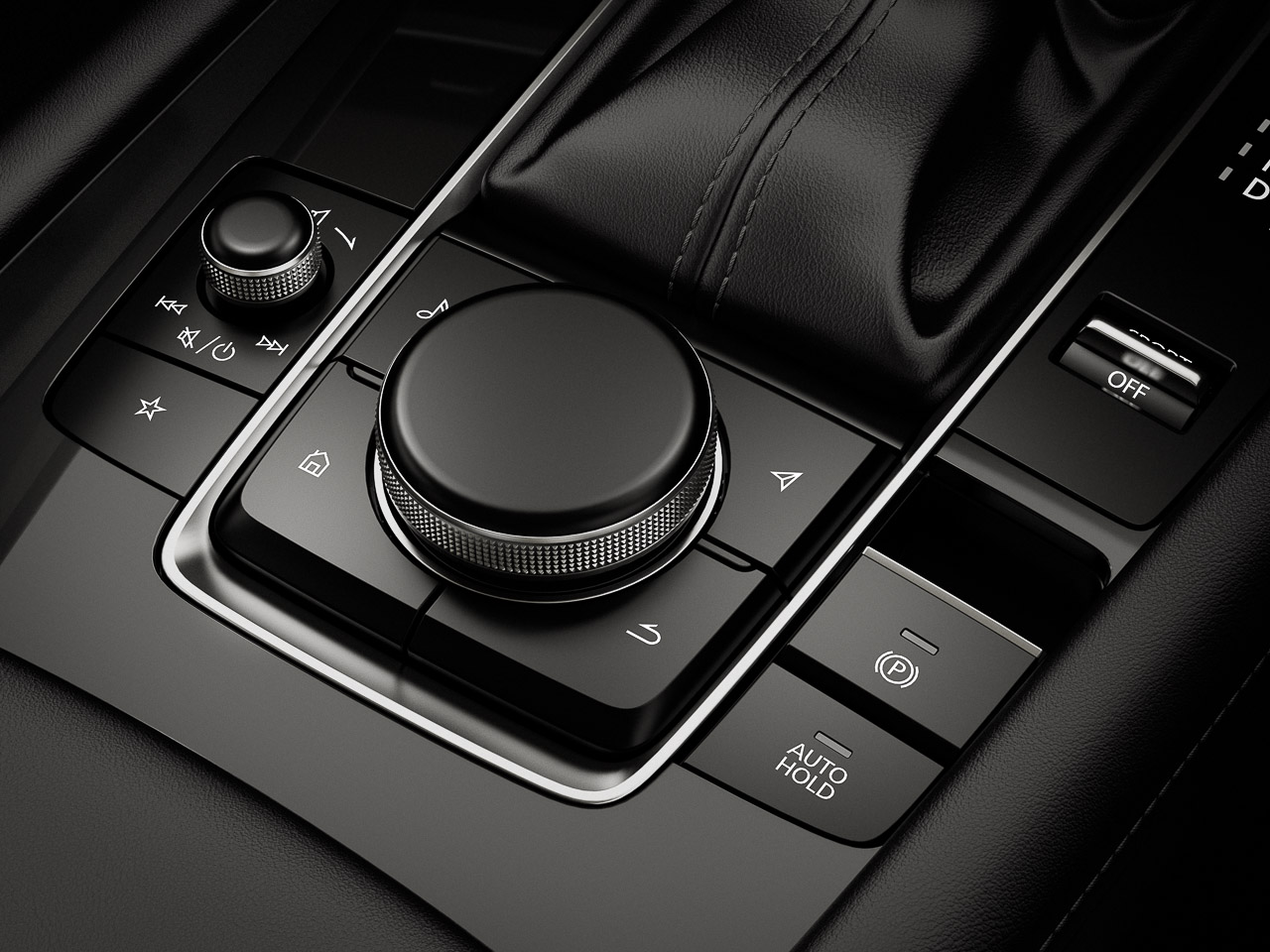







Pious to their product, the folks at Mazda probably thought they’d nail the matter once and for all with a slalom and lane change exercise benchmarked against the aforementioned BMW and Merc they so brazenly incorporated into the driving programme. The new 3 (Mazda’s 3 that is) certainly outperformed its predecessor, which was also present, dynamically. We’ve already established that it’s quite an adept handler after all.

But if I’m being honest, it’s difficult to identify any advantage in the Mazda’s ride and handling over its aged but solid German adversaries, not in said course anyway. That I’m not saying it fell short should still count as a compliment, just not the one Mazda might have hoped for.
In that sense, I guess Mazda has earned some right to list such esteemed company among its peers. But the way in which the new 3 is designed, engineered, equipped and marketed suggests a far more individual product that’s best appreciated without being held to any rudimentary industry standard.
This is a car determined to excel towards its own set of goals with little care for the competition, built by people who will have it no other way. Mazda won’t be topping the sales charts anytime soon with this approach. But its bravado, which has spawned one of the most thought provoking mass-produced cars of the modern era, will certainly be spoken of for years to come.
(Additional images by: Mazda Malaysia)
SPECS
Mazda3 Skyactiv-G 1.5
| ENGINE | TRANSMISSION | WEIGHT | PRICE |
|
1,496cc, 4cyl nat-asp, 118bhp, 153Nm |
6spd auto FWD |
1,368 kg |
RM139,770 |
Mazda3 Skyactiv-G 2.0
| ENGINE | TRANSMISSION | WEIGHT | PRICE |
|
1,998cc, 4cyl nat-asp, 162bhp, 213Nm |
6spd auto FWD |
1,402 kg |
RM150,059 RM160,059* |
